This page is a work in progress. If you have experience with a particular PFD, please leave a comment below!
Both law and common sense dictate that every paddler and passenger must be equipped with an approved personal flotation device (PFD, life jacket, life vest) of the correct size. The specifics of the law vary from place to place, so this page should only be used as a starting point – google “required equipment for paddling in [your country or state]” to check the regulations that apply. Other equipment may also be required for all or some paddlers, such as a sound signalling device (e.g. a pealess whistle), a buoyant heaving line, compass, flashlight, etc.
To comply with the law, your PFD will need to have a certain buoyancy rating, be the correct size, and might have to be one of a few specific high-visibility colors. Again, check your local regulations.
Beyond the law, packrafters should consider a few more factors when choosing a PFD, such as weight, packability, durability, range of motion, and back height. If your PFD is heavy, bulky, doesn’t allow you to move freely, and interferes with your back rest, you are unlikely to wear it. Other features, like pockets, a quick-release tow strap, and a knife attachment point might also be desirable, especially for whitewater paddlers, but they increase the weight and cost of a PFD.
Broadly, there are two categories of PFDs – rigid and inflatable:
Rigid PFDs
By “rigid,” I mean a PFD that uses foam or some other lightweight material to make a permanently buoyant vest, as opposed to something inflatable. If you plan to do any whitewater paddling, choose a rigid PFD.
Inflatable PFDs
Most inflatable PFDs self-inflate using a CO2 canister that is activated by pulling a handle. This is a one-time use system, but there’s generally also a backup inflation valve so you can inflate them by mouth. I have never used a PFD like this, so I can’t comment on their suitability for packrafting, other than to say I would caution against using them in any sort of whitewater scenario.
DIY PFD?
To be legal, PFDs must meet specific requirements and may need to be government certified, so DIY Packraft will never offer a PFD kit or plans. I do not recommend making your own PFD.
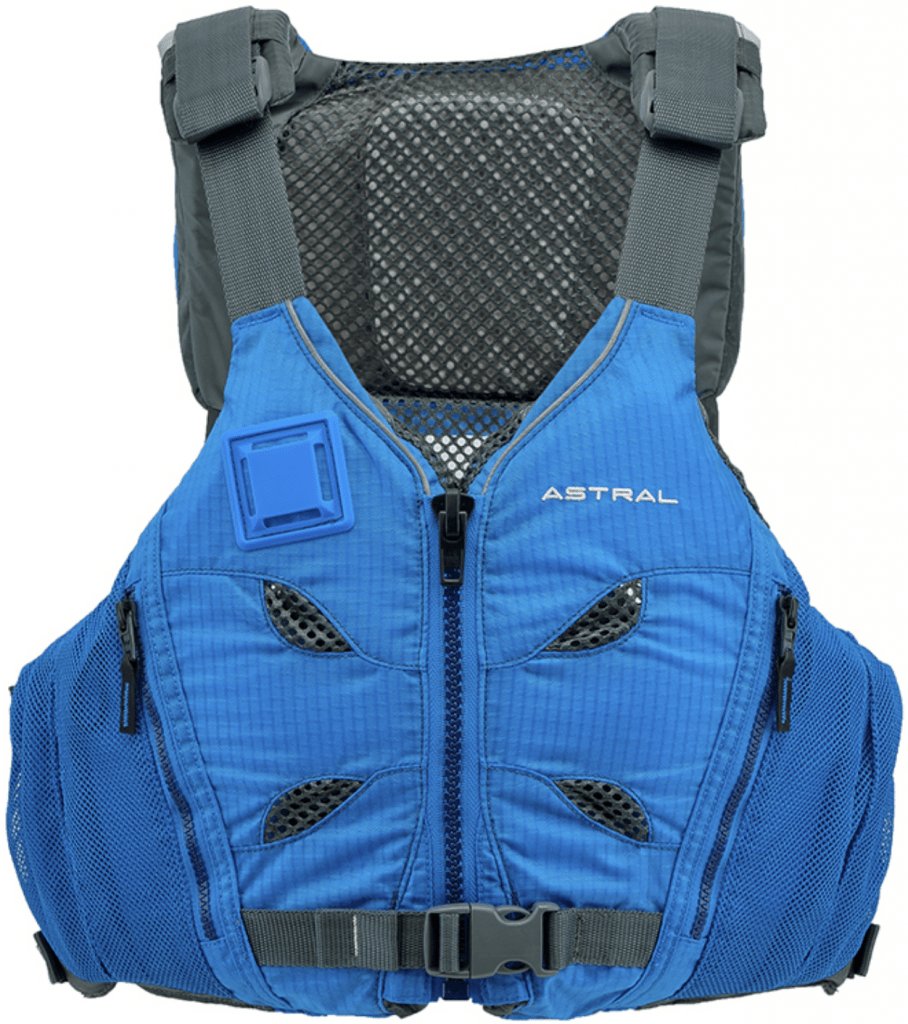
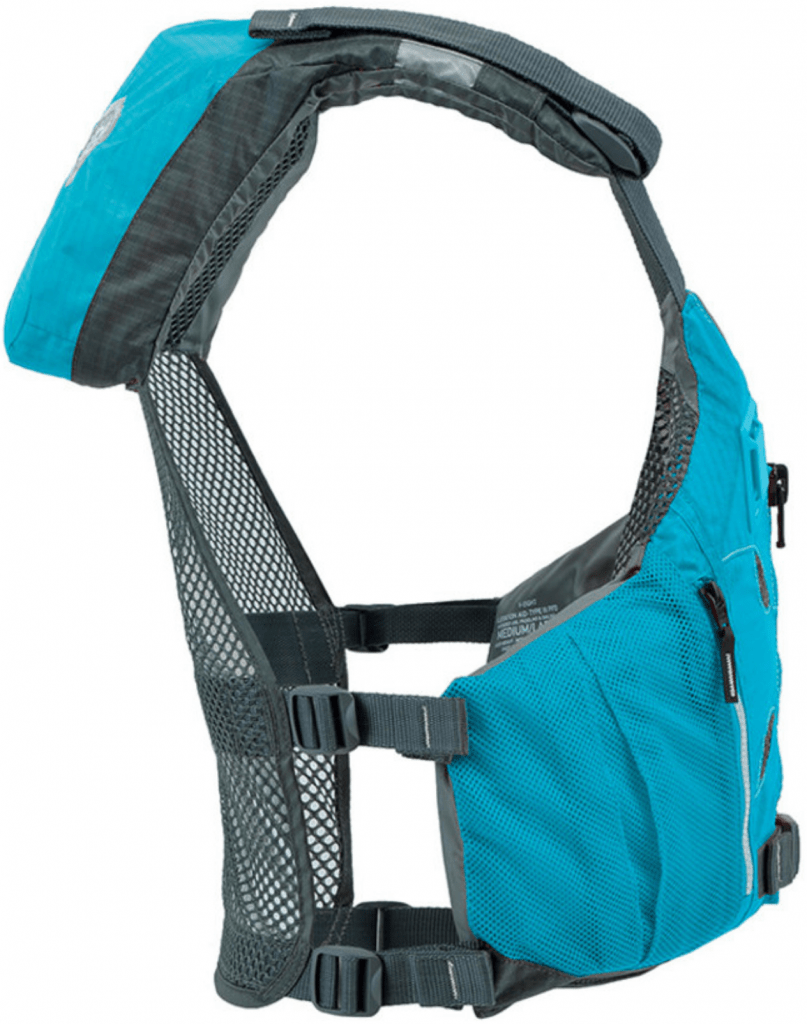
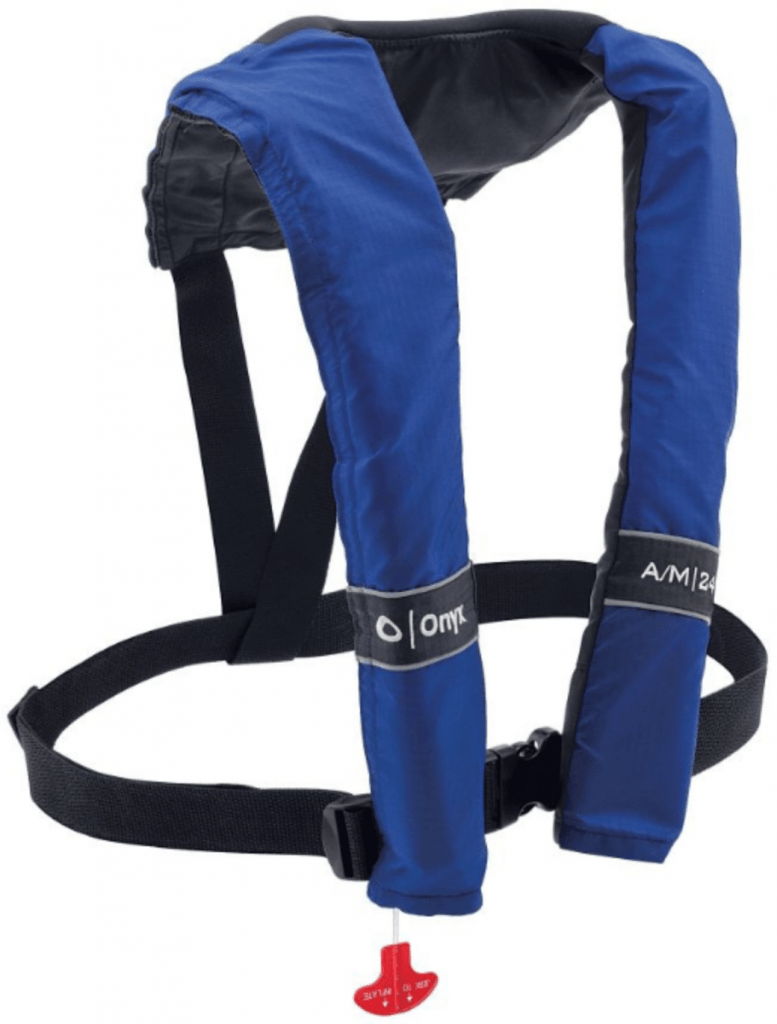
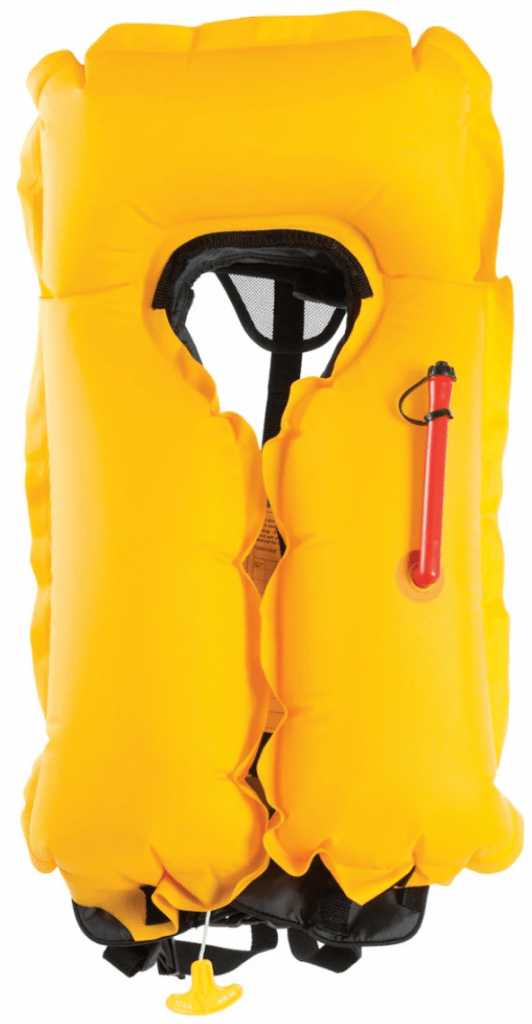
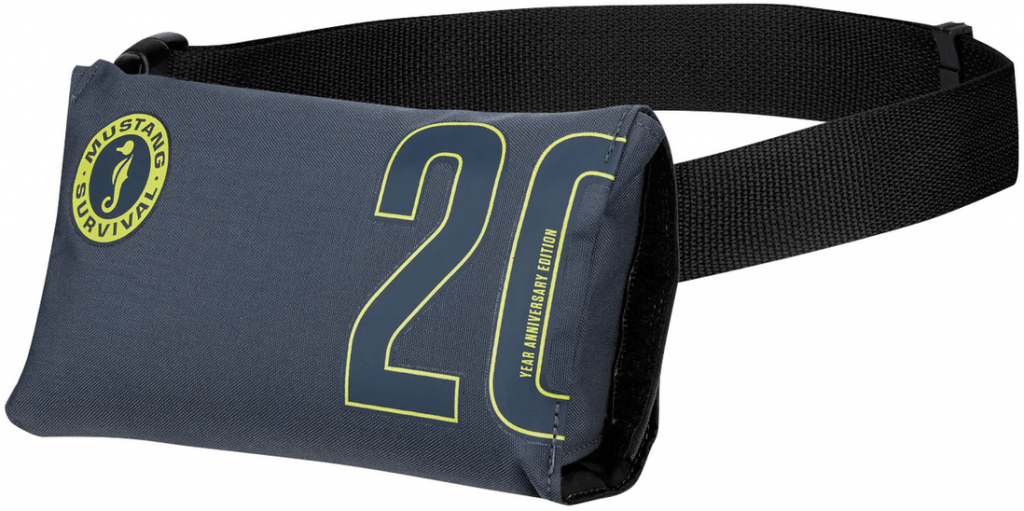
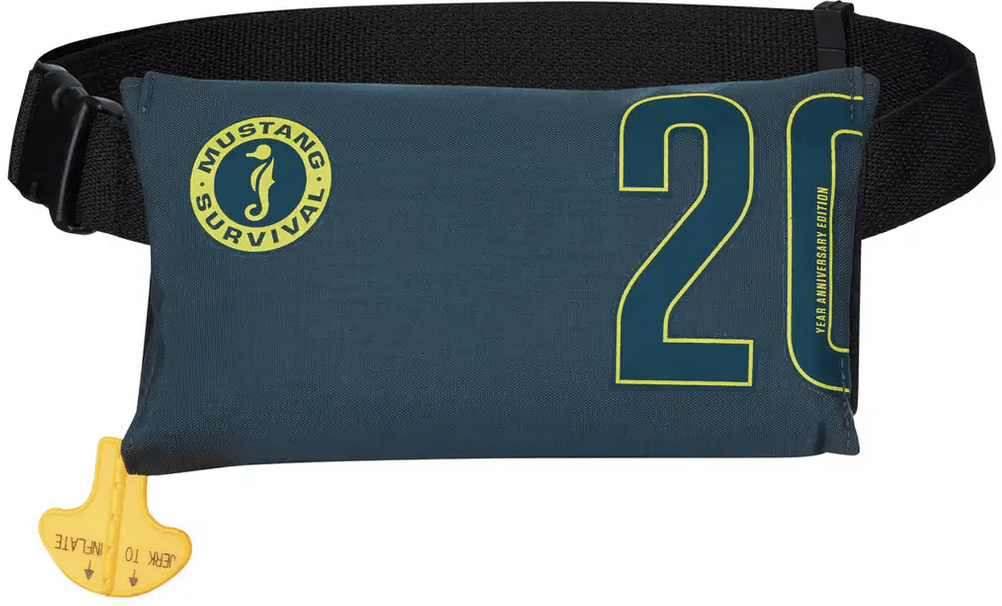
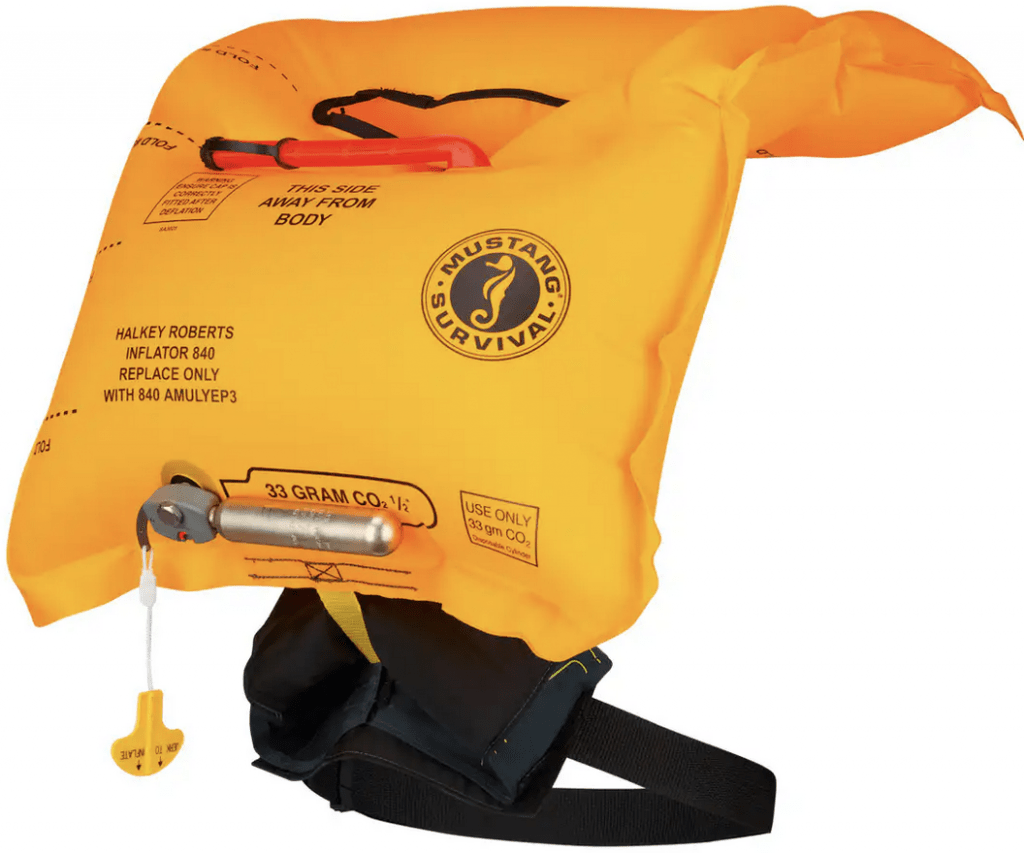
8 Comments
Lawrence · June 1, 2022 at 5:18 pm
In case anyone’s interested, we were just at a Costco in Calgary and picked up 2 HyperLite paddle vests for $40 CAD each! They are a high back design with a zippered pocket, whistle and knife attachment point and are level 70 Buoyancy. The X-Large weighs only 530g. Strangely they are not on the Costco.ca site but they are on the US site for $50 US. More details can be found at https://www.hyperlite.com/paddle-vest
Matt (Admin) · June 1, 2022 at 6:49 pm
That looks like a good deal – thanks for the tip!
Theresa · April 29, 2021 at 7:09 am
A little off topic here but do you require a bailing device in a packraft
Matt (Admin) · April 29, 2021 at 8:23 am
It depends on where you live. A packraft won’t sink if it’s filled with water, but you still have to carry the legally required equipment. Anything that can be used to scoop water is considered a bailing device where I live, so something like a water bottle or a plastic container or a camping pot is sufficient here, but google the regulations for your country.
Chris · March 7, 2021 at 7:26 pm
Another option for a USCG approved PFD (if you’re in the US) is a cheap, light, type 2 pfd like the Seachoice 86020 life vest. It’s about $10 and only weighs 9.3 oz in an adult size. Some people find them uncomfortable but they provide relatively unrestricted paddling movement and don’t have a back to interfere with a backrest. It’s also easier to pack than a typical rigid PFD since it’s basically just a single flat piece of foam that you can strap to your pack. I think for $10 it could be worth trying out to see if it works for you!
Another cheap and light option for a typical high back PFD is the Onyx universal paddle vest. You can find them for about $30 and it weighs only 15.3 oz, and has a pocket. This is the lightest high back PFD I know of and could be an alternative to the MTI Journey if you want a high back.
Matt (Admin) · March 8, 2021 at 11:52 am
Cool – thanks for the info, Chris!
UtahBrian · May 31, 2020 at 5:02 pm
PFDs are complicated and national authorities have required vendors to think about survival in various situations. When you captain a raft with passengers, you need to monitor the fit of PFDs because their main function can be to haul a passenger back into a boat who has been knocked off in a rapid; only a snug PFD with good shoulder straps makes that even possible with passengers who out-weigh you.
I didn’t like them at first, but after being involved in some (mild) rescue situations, and seeing how they work, I changed my mind. I always ask passengers to wear their PFDs whenever they’re on the boat and I’d never want to be in a packraft without one, even on calm warm water.
They make good camp pillows, too.
So I have one of the Move-Vent Onyx PFDs. They’re regularly on sale for US$45-55 at my local outlet (a little less online) and they’re lightweight (about 500g), flexible PFDs designed for whitewater paddling. Can’t beat the price and function.
Matt (Admin) · June 1, 2020 at 8:56 am
Thanks for the suggestion – that looks like a great option!